What are the 5 Oceans of the World?
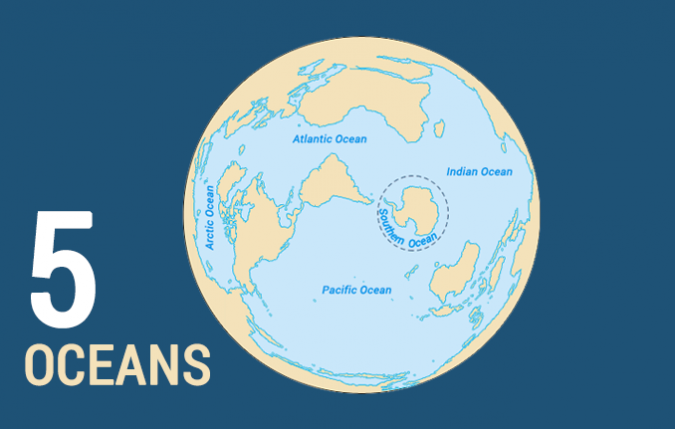
Are there 5 oceans? Are there 4 oceans? Or is there only 1 ocean?
Water consumes 71% of Earth. Over time, the number of oceans has evolved from a single water body to something different.
But it really depends on where you are from if you recognize that there is a fifth ocean.
Pacific, Atlantic, Indian, Arctic… and the Southern Ocean which is off the coast of Antarctica.
Today, we list the top 5 largest oceans in the world and the evolution of 5 oceans on Earth.
1. Pacific Ocean
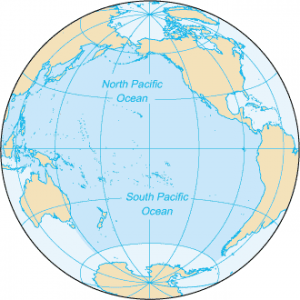
The Pacific Ocean is the largest ocean covering more than 30% of the Earth. This is close to half of the water on Earth.
It touches the west coast border of the Americas along with East Asia and Australia.
The equator divides the Pacific Ocean into two separate parts – the North Pacific Ocean and the South Pacific Ocean.
Pacific means “peaceful” in Latin. It has the deepest trenches with an average depth of 3800m.
READ MORE: Earth’s Crust: Oceanic Crust vs Continental Crust
2. Atlantic Ocean
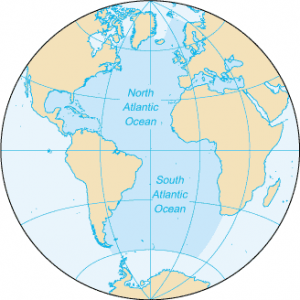
The Atlantic Ocean is situated between the Americas and European/African continents. The Atlantic Ocean is the second-largest and saltiest ocean in the world.
It resembles an S-shape between the Americas, Europe, and Africa. “Atlantic” originated from the Greek god “Atlas” who carried the sky for eternity.
The ocean bottom is composed of the mid-Atlantic Ridge. This submarine mountain range extends all the way from Iceland to 58 degrees South latitude. It’s part of the longest mountain range in the world.
The Vikings, Portuguese, and Christopher Columbus have extensively explored the Atlantic Ocean. Similarly to this day, it’s being used for trade routes such as the transatlantic trade route.
3. Indian Ocean
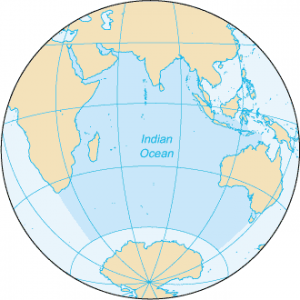
The Indian Ocean is the third largest ocean surrounding a densely populated region. It contains an additional 20% of the water on Earth’s surface.
It borders India in the North, East Africa, Australia, and the Southern Ocean. Because of the higher water temperature, it has limited marine life.
Since about 800 A.D. the Indian Ocean has played an important role in trading. For centuries, navigators have sailed along major ocean currents for shipment routes.
It is bounded by 4 tectonic plate boundaries and may include an additional plate boundary. It is the geologically youngest of the 5 oceans with spreading ridges at divergent plate boundaries.
4. Southern Ocean
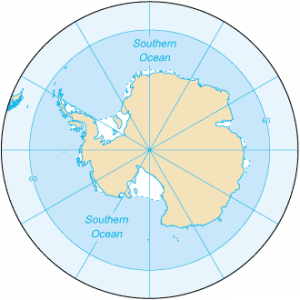
In 2000, the Southern Ocean is the newest ocean recognized by the International Hydrographic Organization. It borders Antarctica in its entirety.
In terms of size, it’s the fourth-largest at 20,327,000 square kilometers. It extends out to 60 degrees South latitude.
It’s an extreme environment and is the least understood of the 5 oceans. This is because it is unexplored, far from populated areas, and has a severe climate.
Despite the Southern Ocean being unexplored, about 80% of all oceans in the world are unexplored. There’s still a lot of work to do for ocean exploration.
5. Arctic Ocean

The Arctic Ocean is the world’s smallest and shallowest ocean of all 5 oceans. Further to this, it is the coldest and least salty ocean.
In size, the Arctic Ocean is about the size of Russia. Because it’s located at the North Pole, the Arctic Ocean has polar ice. But over the years, glaciers have melted threatening sea levels to rise.
Despite the IHO recognizing it as the “Arctic Ocean”, some oceanographers still call it the “Arctic Sea”.
The Arctic Ocean is the most diverse in terms of fish species. It has a wide variety of marine species including whales, jellyfish, etc.
But because of its frigid temperatures, it has little plant life. This makes it one of the most fragile ecosystems on the planet.
Sail the 5 oceans
Along with oceans, the Earth has seas. But there are much more than 7. Seas are surrounded by continents. For example, the continents of Europe, Africa, and Asia surround the Mediterranean Sea.
Water covers approximately 71% of Earth’s surface. But there is a lot unknown about our oceans. This is why oceanography is an emerging science with all sorts of available courses in water science.
Do you have any questions or comments about our 5 oceans? Please use the comment form below and let us know what’s on your mind.


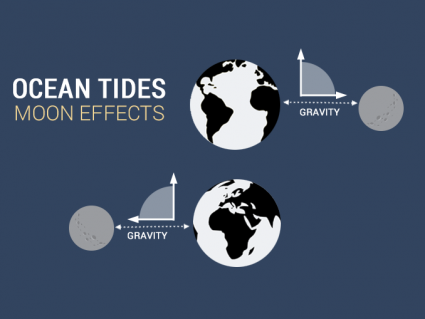
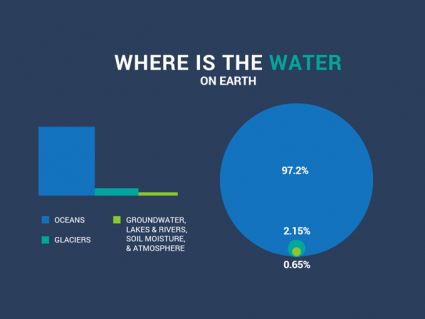
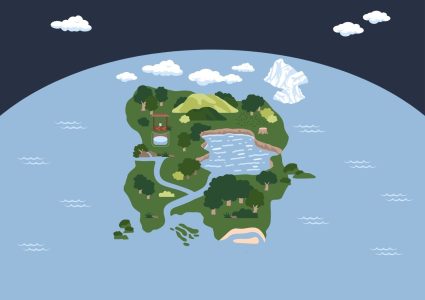
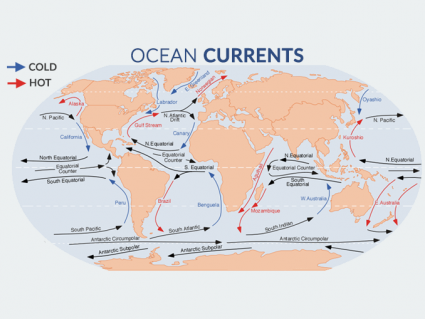
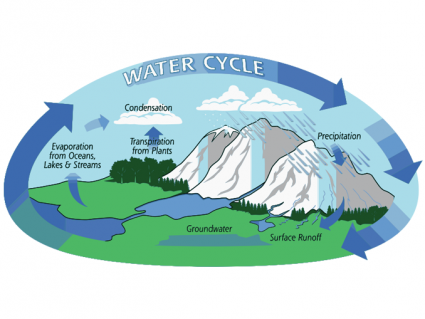
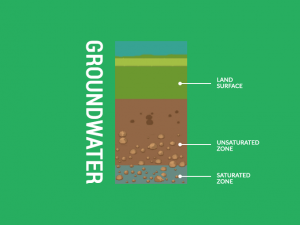
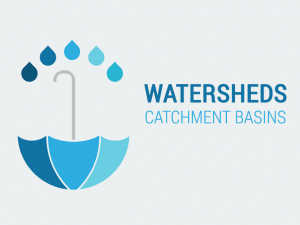
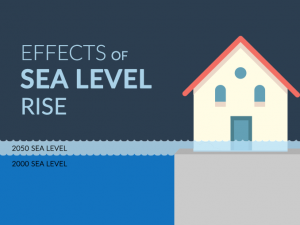

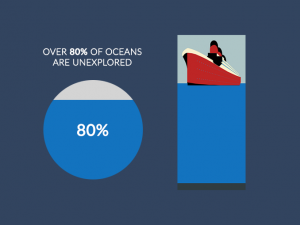
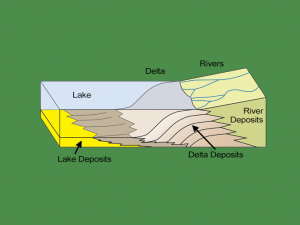

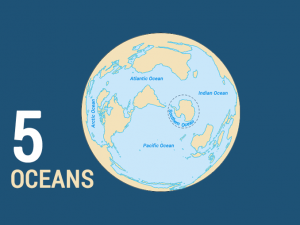
thank you this helped me write my paper
I loved reading about the facts of the 5 oceans. Can you recommend a book in which I can find more information? It is just for self-study.
thank you these helped me
Thx for the human answer… useless when I use Google Dumb@#s ai
I really got smarter
thank you this really helped me understand the oceans and continents!
At the time I went to school, 2005s, we were taught there were 5 oceans and 7 continents. The Oceans are the same as today except that the Southern Ocean was called the Antartic Ocean. Again this was back in the 20’s. That’s how I still remember them so I can name them all even now.
Thanks and regards for your efforts of spreading knowledge beyond barriers of Countries, religions, ethnicity, races, languages, colors, caste, creed etc, and these sincere helps shall make our motherland Earth which is the only living planet known, best of luck for your beautiful future.
So great to see this information presented in such a simple yet clear way. I teach preschoolers- we will make up a song about the names of the oceans! Several 4 year olds have asked me where does water come from? This will make for wonderful discussions around our morning circle! Thank you.
At the time I went to school, 1950s, we were taught there were 5 oceans and 7 continents. The Oceans are the same as today except that the Southern Ocean was called the Antartic Ocean. Again this was back in the 50’s. That’s how I still remember them so I can name them all even now.
You had the Pacific as being on the West and South coasts of Australia with the Southern Ocean no where near Australia. In fact the whole Southern coast of Australia is on the Southern Ocean.
I’d say mostly because of it’s size. The Mediterranean Sea is just over 2.5 million square kilometers. An ocean like the Atlantic is 106 million square kilometers.
That’s a difference of over 42 times, the Atlantic Ocean is larger than the Mediterranean Sea.
I’d also say that Mediterranean Sea is more enclosed. It borders 3 continents (Europe to the north, Africa to the south and Asia to the east). This makes it feel like a smaller water body.
Why isn’t the Mediterranean an ocean?
Yes, me too! There were only 4 oceans when I was in school and Southern Ocean wasn’t recognized.
I found this very informative. ? I’ve been out of school for awhile and needed a refresher course. There were only 4 oceans taught when I was in School. The Southen Ocean was not listed.
This is so helpful
Fantastic it’s very helpful
The information provided it is very helpful. Thank you
Don’t forget to throw in a little bit of propaganda at the end. So typical.
Earthhow says: “About 2.1% of Earth’s water is in glaciers. At the current rate, the sea level will rise 32 to 68 inches by 2100. So, yes there will be more water as glaciers continue to melt.”
Ridiculous: A study on sea level rise shows that the sea has been rising at a fairly consistent rate over the last 170 years. From the study: ” We show that sea level rose by 28 cm (11 Inches) during 1700 – 2000; simple extrapolation leads to a 34 cm (13 inches) rise between 1990 and 2090.” Quit fearmongering
source: https://psmsl.org/products/reconstructions/2008GL033611.pdf
Is Michal G from Idaho? Or maybe Florida, or Texas? We have a lot of discord regarding teaching reality vs. self-righteous ignorance…
I found it helpful for my assignment…
Why the propaganda about glaciers melting and sea level rise? You know it’s nonsense. Shame on you.
The earth is 70% of water
How many seas are in the world.
Please can you provide the information about each ocean? How much place each of them covers and how much water is in each?
Here’s an article on escape velocity that should answer your question – What is Earth’s Escape Velocity?
I am interested in writing about the oceans. What I am interested in is the unknown. Apparently, we know very little about what lies beneath the ocean floor. I would hope you will be able to lead or inform me on how to get more information. I am not a youngster and I have no student papers to write. I am just interested so I can write about it.
Thank you in advance.
Earthhow, how does the water not leak into space
Loved it so great ahh using it on an assignment
Absolutely awesome. If I were 40 years younger I know this is what I would study. Thank you for the information.
Literally very helpful, thank you.
It is very knowledgeable site. Great to see oceans history at one site.
Thanks ??
Thank you. I used it for my oceanography lessons
A summarized version and very helpful
Thanks I am smarter now
Thank you that helped me so much
Had a good experience with this website. Nice website ??
Good website. Nice
The 5 oceans are very cool. But people have to fly because if they like to go on the water it would probably take them a really long time like once a flying a couple hours but it was totally worth it.
Thanks ?
Wow this is amazing
Thanks this helped a lot on my assignment.
The Atlantic Ocean is the saltiest ocean out of all five oceans. I never knew that and the Indian Ocean is also the youngest ocean out of all five oceans. I also never knew that. This really helped me on my assignment.
Great thanks a lot. It helped me with my assignment
This is really great my children are really learning from this
This really educating thanks
Very good ????
My child had a report to do about an ocean. Lots of information.
Excellent information for kids
Yes, water covers 71% of the world.
About 2.1% of Earth’s water is in glaciers. At the current rate, sea level will could rise 32 to 68 inches by 2100. So, yes there will be more water as glaciers continue to melt.
Does water really cover 71% of our world?!? Will it cover more as the time goes on?
I enjoyed this fact. Thank you.
Educational tips really helpful!